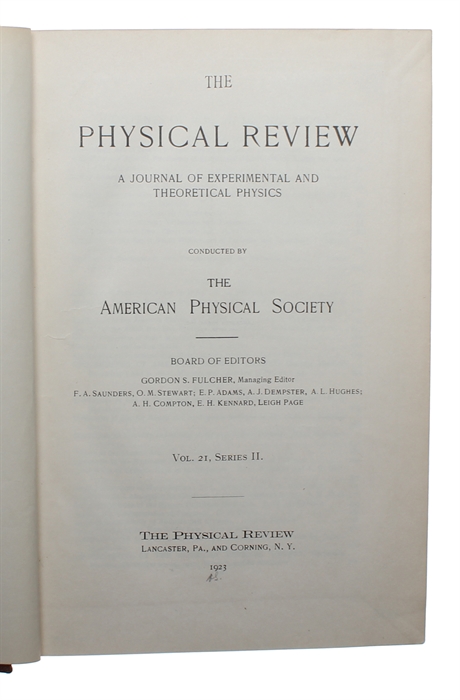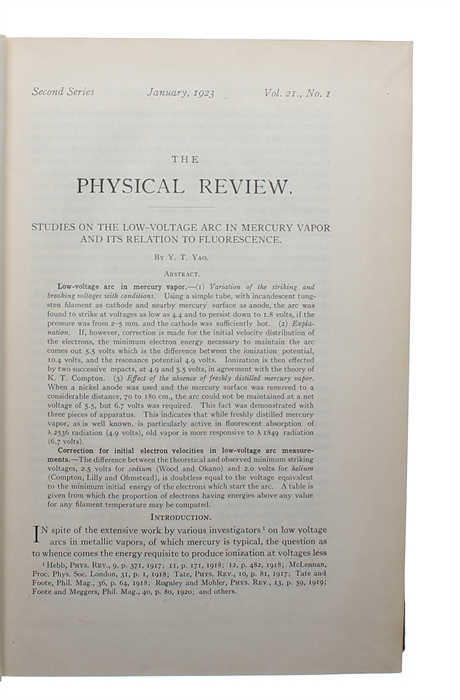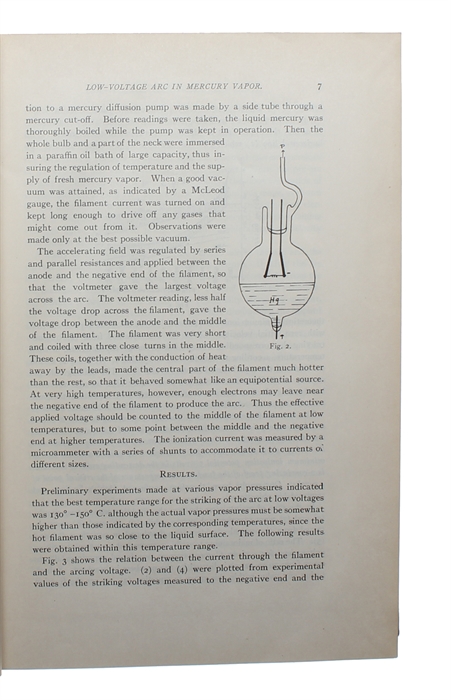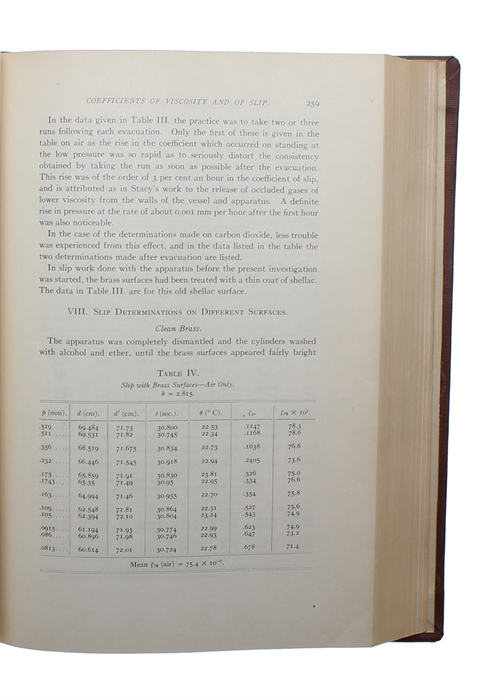COMPTON, ARTHUR HOLLY. - THE DISCOVERY OF THE COMPTON-EFFECT, NOBEL PRIZE PAPER.
A Quantum Theory of the scattering of X-Rays by Light Elements.
Lancaster, The Physical Review, 1923.
Royal8vo. Contemp. full buckram. In:"The Physical Review", Series II, vol. 21. (4),736 pp., Plates and textillustr. (Entire volume offered). A perforated stamp in upper margin on a few leaves. Compton's paper: pp. (483-) 501.
First printing of this milestone paper in quantum physics in which Compton verifies Planck's quantum postulate and found that some of the X-rays had, in scattering, lenghtened their wavelenght. This phenomena was called the "Compton Effect" in his honour. For this discovery Compton received the Nobel prize in physics in 1927.
"Compton was able to account for this (lenghtening of wavelenght) by presuming that a photon of light struch an electron, which recoiled, subtracting some energy from the photon and therefore increasing its wavelenght. This made it seem that a photon acted as a particle: thus after more than a century, the particulate natuer of light, as evolved by Newton, was revived... What itamounted to was that Compton brought to fruition the view that electromagnetic radiation had both a wave aspect and a particle aspect, and that the aspect which was most evident depended on how the radiation was tested. De Broglie was, at the same time, showing that this held true also for ordinary particles, such as electrons." (Asimov)
Parkinson "Breakthroughs", 1923 P. - Sigmund Brandt "The Harvest of as Century", Episode 31.
Order-nr.: 47061





